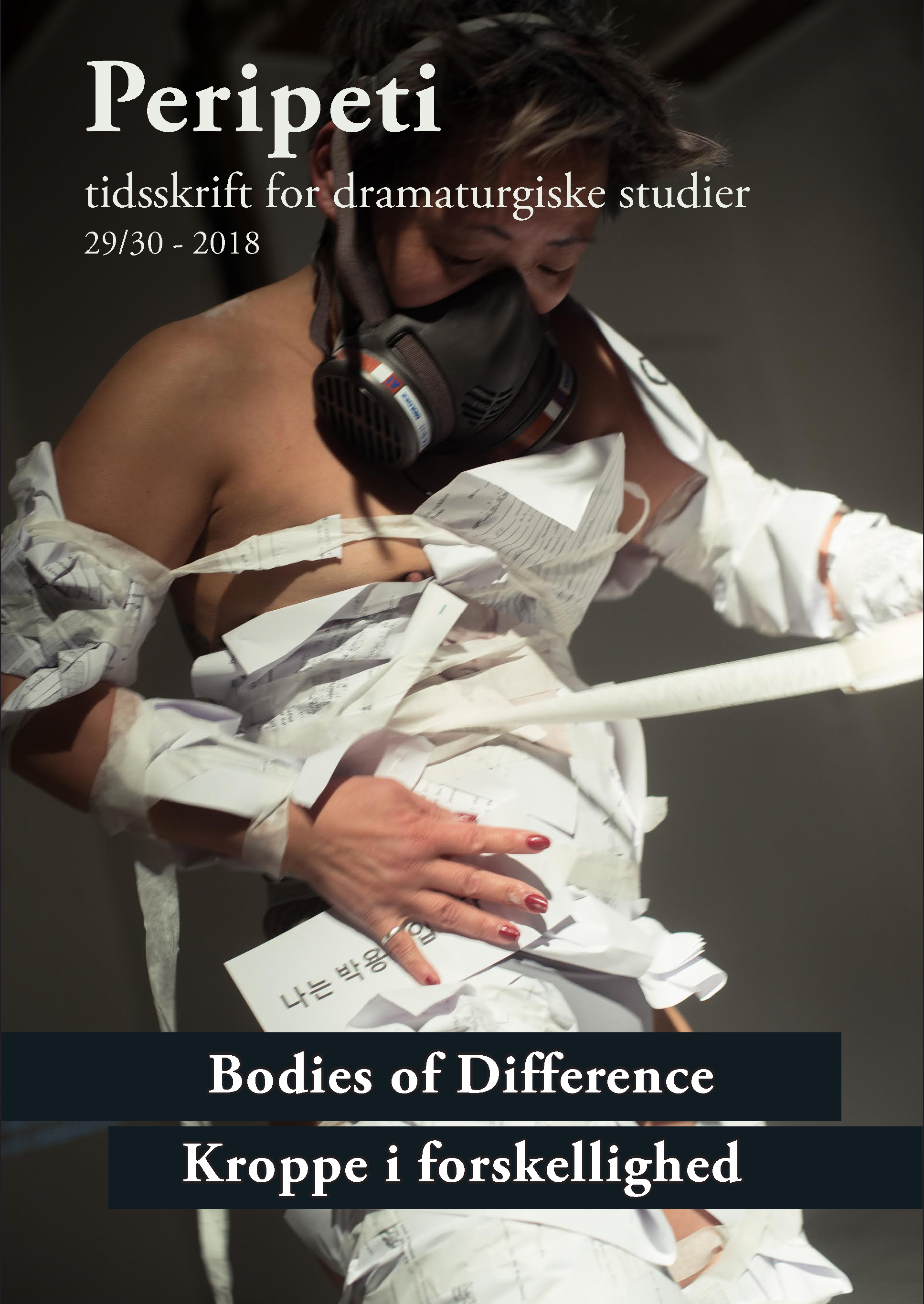* Spasticitet er en kropslig variation
En cripteoretisk analyse af danseforestillingen SPLASTIC
DOI:
https://doi.org/10.7146/peri.v15i29/30.109635Nøgleord:
contemporary dance, crip, butoh, neoliberalism, failing, moderne dans, neoliberalisme, at fejleResumé
The dance performance SPLASTIC celebrates the potential of spastic movement. This article asks if the performance also avoids reproducing normative narratives about the norm-challenging body. The answer is: Not entirely. But the curious, ugly and unproductive movements allow the dancers to counter bodily normativity and efficiency demands and makes visible the potential.
Referencer
Clare, Eli, 1999. Exile and Pride. Boston: South End Press.
Foucault, Michel, 2009. Biopolitikkens Fødsel – Forelæsninger på Collége de France 1978- 1979. København: Hans Reitzels Forlag.
Foucault, Michel, 2002. Overvågning og straf – Fængslets fødsel. København: Det lille Forlag.
Garland-Thomson, Rosemarie, 1997. Extraordinary Bodies. Figuring Physical Disability in American Culture and Literature. New York: Columbia University Press.
Garland-Thomson, Rosemarie. (2011). “Misfit: A Feminist Materialist Disability Concept.” Hypatia: A Journal of Feminist Philosophy vol. 26, no 3. s. 591-609.
Halberstam, J., 2011. The Queer Art of Failure. Durham: Duke University Press.
McRuer, Robert. 2006. Crip Theory: Cultural Signs of Queerness and Disability. New York: New York University Press.
Rydström, Jens. (2012). “Introduction: Crip theory in Scandinavia” lambda nordica: The Crip Theory issue, 1-2/2012, s. 9- 20.
Downloads
Publiceret
Citation/Eksport
Nummer
Sektion
Licens
Det følgende vedrører alle Peripeti-udgivelser fra 2024, nr. 39, og senere:
Peripeti er et Diamond Open Access-tidsskrift, der giver direkte open acces til publiceret indhold ud fra princippet om, at det at gøre forskning frit tilgængelig for offentligheden understøtter en større global udveksling af viden.
Forfattere skal ikke betale for indsendelse, redigering eller offentliggørelse af artikler.
Forfattere, der bidrager til Peripeti, bevarer ophavsretten til deres artikler.
Forfattere accepterer at udgive artikler under en Creative Commons CC-BY-NC 4.0-licens. Vilkårene for denne licens tillader brugere frit at kopiere og videredistribuere materialet i ethvert medie eller format og at tilpasse, transformere og bygge videre på materialet, så længe der gives passende kreditering, et link til licensen gives, og eventuelle ændringer angives. Brugere må ikke dele eller tilpasse materialet til kommercielle formål uden samtykke fra licensgiveren. Brugen af licensen må ikke på nogen måde antyde, at licensgiveren støtter tredjeparten eller dennes brug. Licensen kan ikke tilbagekaldes.
Forfattere opfordres til at lægge deres artikler ud på personlige og/eller institutionelle hjemmesider for at sikre endnu større offentlig adgang efter udgivelsen. Forfattere har ret til at arkivere deres artikler i fondes og offentlige institutioners arkiver, men Peripeti anmoder om, at forfattere bruger et direkte link til den publicerede artikel på tidsskriftets hjemmeside, når det er muligt, da Peripeti som en ikke-kommerciel, offentligt finansieret udgiver er afhængig af niveauet af brugeraktivitet på tidsskriftets hjemmeside.
Vedrørende tidligere udgivelser, indtil 2024, herunder nr. 38:
Ophavsretten deles mellem Peripeti og forfatteren/forfatterne. Tidsskriftet er et open access-tidsskrift, der giver direkte adgang til alt indhold baseret på princippet om, at det at gøre forskning frit tilgængelig for offentligheden understøtter en større global udveksling af viden. Brugere kan frit kopiere og dele materiale i ethvert medie eller format, så længe der gives passende kreditering. Enhver anden brug kræver skriftligt samtykke fra indehaverne af ophavsretten.





